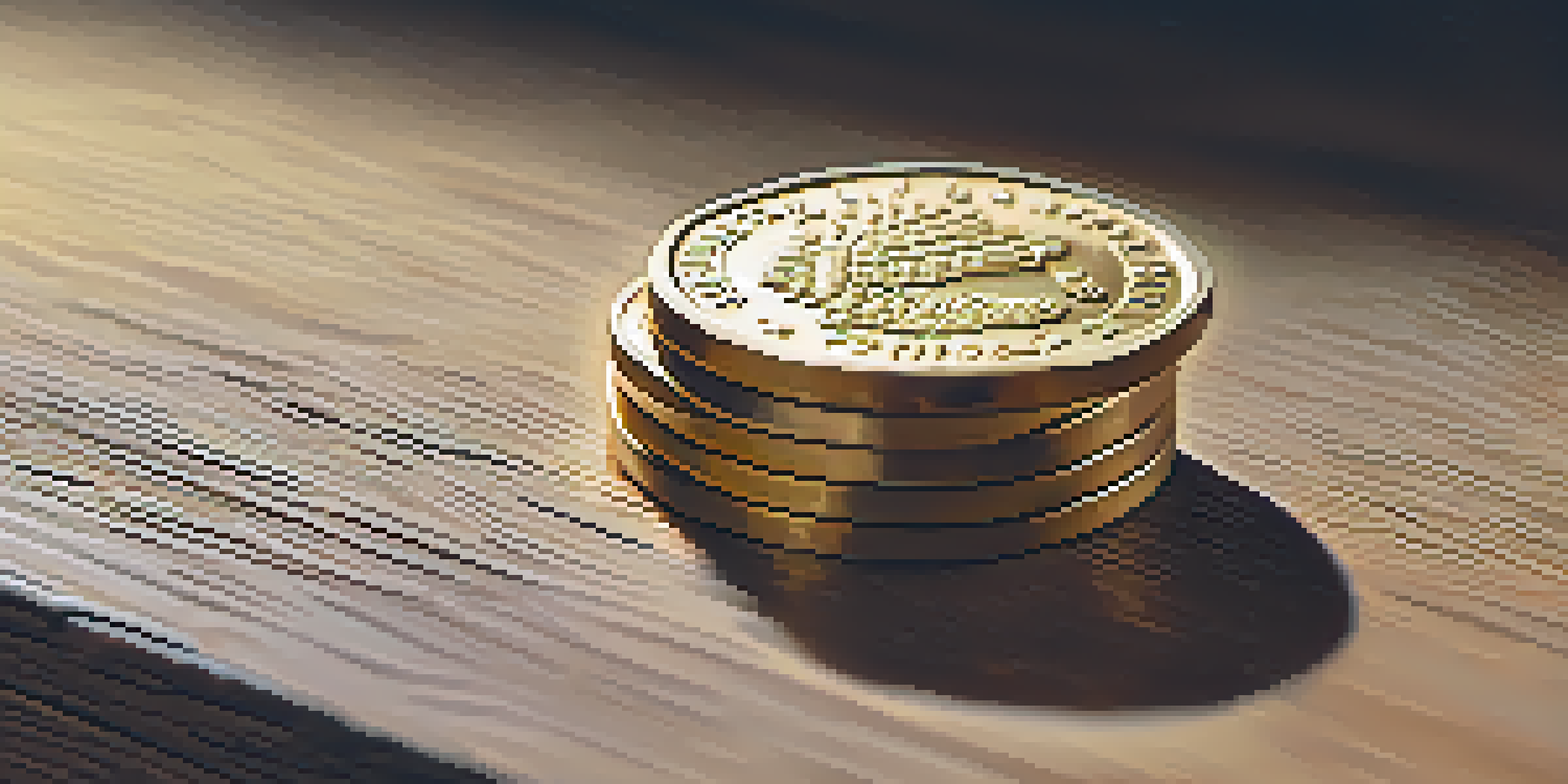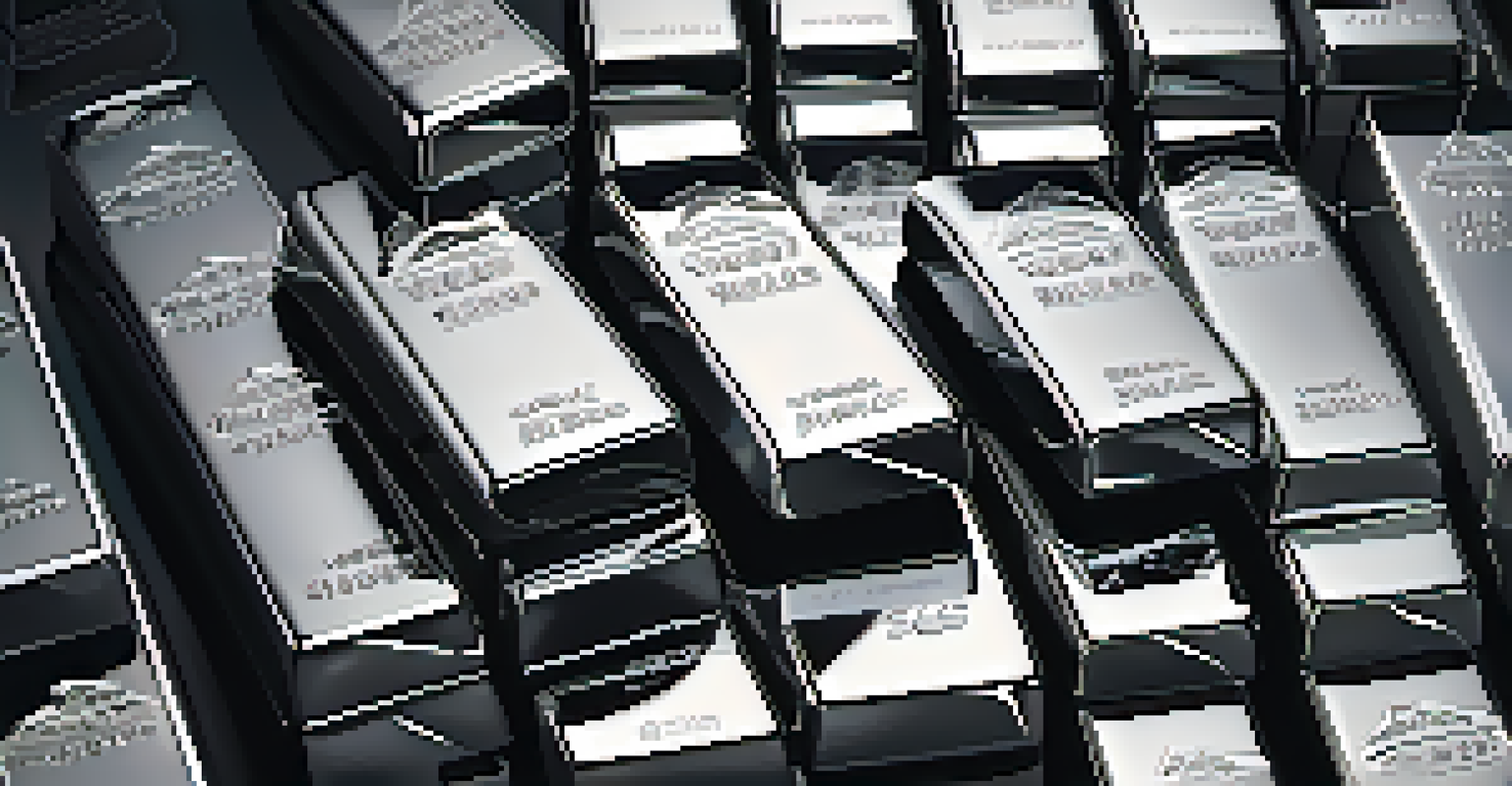Investing in Commodities: Gold, Oil, and Beyond

Understanding Commodities: What Are They Exactly?
Commodities are basic goods used in commerce that are interchangeable with other goods of the same type. Think of them as the building blocks of the economy, including items like agricultural products, metals, and energy resources. When you invest in commodities, you're essentially betting on the future supply and demand of these essential goods.
In investing, what is comfortable is rarely profitable.
Investing in commodities can be appealing due to their potential to hedge against inflation and economic downturns. For instance, when inflation rises, the value of currency may decrease, but tangible assets like gold often retain their value. This is why many investors turn to commodities during uncertain times.
It's important to note that commodities can be volatile, influenced by various factors like geopolitical events, weather conditions, and changes in supply chains. This volatility can present opportunities but also risks, making it essential for investors to stay informed and consider their risk tolerance.
Gold: The Timeless Safe Haven Investment
Gold has long been regarded as a safe haven for investors, especially during turbulent times. Its intrinsic value and historical significance as a form of currency make it a popular choice for those looking to preserve wealth. Many investors turn to gold when they anticipate economic instability, as it tends to hold its value better than paper currencies.

Moreover, gold can act as a hedge against inflation, which is a common concern in today’s economy. As the cost of living rises, gold often appreciates, providing a buffer for your investments. This relationship makes gold a unique asset that can stabilize a portfolio when other markets are unpredictable.
Commodities Are Economic Essentials
Commodities, like gold and oil, serve as fundamental goods that investors rely on to navigate economic fluctuations and hedge against risks.
Investing in gold can take various forms, from physical bullion to exchange-traded funds (ETFs) that track gold prices. Each method has its pros and cons, so it's wise to research which option aligns best with your investment strategy and goals.
Oil: The Driving Force Behind Global Economies
Oil is often referred to as black gold due to its immense value in powering economies around the world. As one of the most traded commodities, oil prices can significantly impact everything from transportation costs to the prices of everyday goods. Understanding oil markets is crucial for any investor looking to diversify their portfolio.
The stock market is filled with individuals who know the price of everything, but the value of nothing.
The oil market can be influenced by various factors, including geopolitical tensions, production levels set by OPEC, and advancements in renewable energy. For example, when tensions arise in oil-producing regions, prices can spike, creating opportunities for savvy investors. However, this volatility also brings risks, requiring close monitoring of global events.
Investing in oil can be done through direct purchases of oil stocks, ETFs, or commodities futures. Each method comes with its own set of risks and rewards, so it’s essential to determine which investment approach suits your financial goals and risk appetite.
Agricultural Commodities: The Backbone of Food Supply
Agricultural commodities, such as wheat, corn, and soybeans, play a crucial role in the global food supply chain. Investing in these commodities can provide insights into broader economic trends, especially as population growth increases demand for food. Understanding seasonal cycles and weather patterns is key to navigating this market effectively.
For example, a drought in a major wheat-producing region can lead to decreased supply and higher prices, impacting global food markets. By keeping an eye on agricultural trends, investors can capitalize on fluctuations in supply and demand to make informed investment decisions. This market can be both rewarding and challenging, requiring a keen awareness of external factors.
Gold as a Safe Haven Investment
Gold's intrinsic value and historical significance make it a preferred choice for preserving wealth during times of economic uncertainty.
Investing in agricultural commodities can be approached through futures contracts or agricultural ETFs, allowing investors to gain exposure without needing to own physical crops. As with any investment, it's vital to weigh the risks and rewards before committing your resources.
Metals Beyond Gold: Silver, Platinum, and More
While gold often steals the spotlight, other metals like silver and platinum also present valuable investment opportunities. Each metal has unique properties and applications, influencing its market value. For instance, silver is not only used in jewelry but also in electronics and solar panels, making it a versatile investment.
Platinum, known for its rarity and industrial applications, is often used in automotive catalytic converters and jewelry. Investors may find that diversifying into these metals can enhance their portfolios, especially as demand shifts due to technological advancements and changing consumer preferences.
Investing in these metals can be done through physical purchases, ETFs, or mining stocks, each offering different levels of exposure and risk. As always, understanding the market dynamics and how these metals fit into the broader economic picture is crucial for successful investing.
The Role of ETFs in Commodity Investing
Exchange-Traded Funds (ETFs) have become a popular way for investors to gain exposure to commodities without the complexities of physical ownership. These funds pool money from multiple investors to purchase commodities or commodity-related assets, offering a diversified investment approach. This can be particularly beneficial for those new to commodity investing.
ETFs can track specific commodities like gold or oil, or they can encompass a broader range of commodities, thus spreading risk. For instance, a commodity ETF might include various agricultural products, giving investors a well-rounded exposure to the sector. This diversification can help mitigate the volatility often associated with individual commodities.
ETFs Simplify Commodity Investing
Exchange-Traded Funds (ETFs) provide an accessible way for investors to diversify their exposure to commodities without the complexities of physical ownership.
Moreover, investing in ETFs allows for easier trading, as they can be bought and sold on stock exchanges like regular stocks. This liquidity gives investors the flexibility to adjust their portfolios quickly in response to market changes, making ETFs an attractive option for both novice and experienced investors.
Risks and Considerations in Commodity Investing
While commodity investing can offer substantial rewards, it also comes with its share of risks. Prices can fluctuate dramatically due to various factors, including geopolitical events, natural disasters, and changes in global demand. Therefore, it's essential for investors to conduct thorough research and stay informed about market trends.
Another key consideration is the impact of inflation and currency fluctuations on commodity prices. For example, a weak dollar can make commodities more expensive for foreign buyers, potentially driving up prices. Understanding these economic indicators can help investors make better-informed decisions about when to enter or exit the market.

Finally, risk management strategies such as diversification and setting clear investment goals can help mitigate potential losses. By spreading investments across different commodities and maintaining a balanced portfolio, investors can enhance their chances of achieving long-term success in this dynamic market.